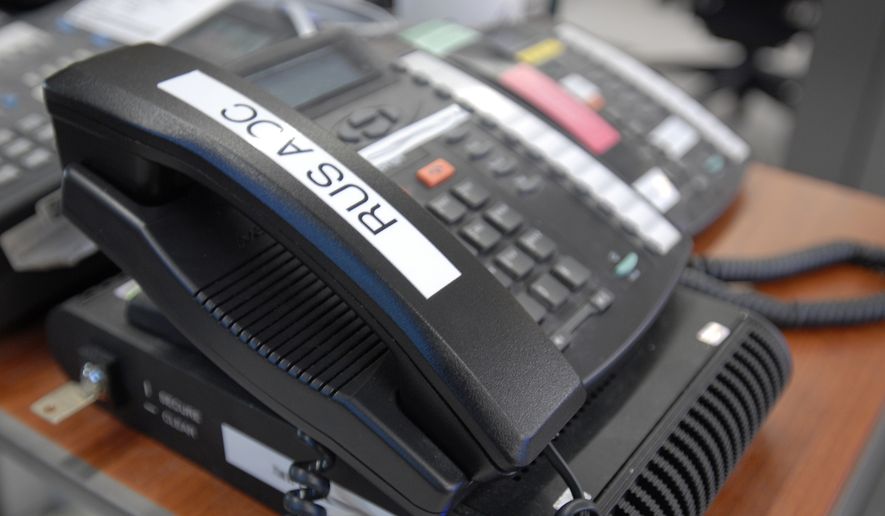AL UDEID AIR BASE, Qatar — It’s an ordinary-looking, 1990s-era black plastic telephone, but it’s one that American military commanders here rely on daily to prevent the outbreak of World War III.
At any given moment, American jet fighters could be carving up the skies within shooting range of Russian MiGs over nearby Syria. The “deconfliction line” exists to make sure things don’t turn ugly.
It’s the most sensitive direct communication link U.S. and Russian officials have to ensure their many aircraft — flying conflicting missions across Syria’s increasingly crowded and chaotic skies — don’t clash in an unintended way.
“We’re on the phone with [the Russians] 15 to 20 times a day just trying to make sure their operation and our operation stay separate,” said Air Force Maj. Gen. David S. Nahom, a top commander of the U.S.-led bombing campaign being run from this strategic base in the Persian Gulf.
Some of the calls are scheduled, but other times “the Russians call us and say, ‘We are going to make a strike here; do you have any friendlies on the ground there?’” Gen. Nahom said in an interview at Al Udeid.
“It’s that kind of deconfliction, to make sure we aren’t hurting their forces and they aren’t hurting ours,” he said, adding that “it’s very trying at times” because Washington and Moscow have different objectives.
SEE ALSO: Al Udeid Air Base in Qatar puts U.S. in Persian Gulf allies’ conflict
The level of complexity of who is backing whom in Syria is hard to overstate. Russia and Iran battle Islamic State while taking on rebel Syrian groups fighting their ally, Syrian President Bashar Assad. The U.S., which has backed its own opposition group, now says the coalition it has assembled is focused on the campaign to eliminate Islamic State in Iraq and Syria.
The Russian and Syrian air forces have jets in the sky, while the Iranians are flying drones. Turkey has jets in the air, and the U.S.-led coalition has drones, jets, bombers and refueling planes.
It’s even more chaotic on the ground, with so many proxy militias at play that officials privately refer to it as the “Game of Thrones” — the popular American fantasy TV series.
“If I gave you a minute to write down everybody who’s on the ground in the northwest corner of Syria, I reckon you’d probably struggle because, frankly, there are a lot of parties out there and a fair number of agendas as well,” said British Air Commodore Johnny Stringer, who is stationed at Al Udeid.
The phone assumed an even greater importance recently, following a series of Russian and Syrian military strikes against the Syrian Democratic Forces, the U.S.-advised alliance of Kurdish and Arab paramilitary fighters battling Islamic State.
The Pentagon described the strikes as “accidental targeting” by Russia-backed forces. Col. Ryan Dillon, the top U.S. military spokesman in Iraq, told reporters on Sept. 28 that U.S. officials had contacted the Russians “to prevent accidental targeting and to ease tensions.”
U.S. commanders at Al Udeid said the airspace over Syria has just become more complex as Islamic State’s territory shrinks.
“Russian interests and our interests are starting to converge on the same small piece of sky,” Gen. Nahom said.
Commodore Stringer put it more bluntly: “I’ve been doing front-line [operations] now for about 23 years on and off, and I think it’s the most complex battle space I can recall anywhere, on the ground and in the air. When you’re dealing 500 miles an hour, distances shrink pretty quickly.”
• Carlo Muñoz contributed to this report from Washington.
• Guy Taylor can be reached at gtaylor@washingtontimes.com.




Please read our comment policy before commenting.